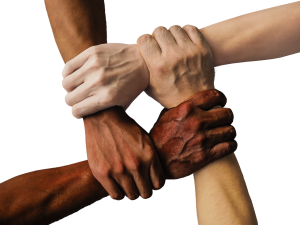 Let me start by stating that I am brown, based out of Asia Pacific, and continue to witness first-hand the impact of racism and majority privilege from where I live.
Let me start by stating that I am brown, based out of Asia Pacific, and continue to witness first-hand the impact of racism and majority privilege from where I live.
Racism follows geographical lines and country of origins in this part of the world. Just ask the domestic help in affluent Hong Kong and Singapore.
Acts of racism also spill over to prejudice and bigotry more often. And with a majority that shies away from countering public displays of pure bigotry (or becoming colorblind by rationalizing these acts), these situations can scar personalities.
But this blog is not about the self-reflection of a minority, a call for Black Lives Matter (BLM) for other colors, or a discourse of racism from the other side of the Pacific. Rather, it is a call for inclusive PR.
Inclusive PR is more than removing “whitening” from product labels. It needs to address social bias that sometimes can be contradictory.
Just take whitening products. In Asia Pacific, people see status in fairer complexion: You are fair because you are not working in the fields. It is why whitening products continue to be a sellout in areas like Thailand, India, Korea, and Japan, whose young are also proponents of BLM. It is why Priyanka Chopra is getting called out for speaking against racism while promoting “fairness” creams in India.
Getting PR right in a contradictory landscape is difficult. Yet, it should not stop us from pursuing it. In fact, many will say, it is about time. Here are three steps to start that journey.
-
Stop denying racism
What is worse than racism? Denying it exists. This inaction is one issue that is fueling protests.
For companies, sitting on the fence or waiting for the current situation to blow over will no longer cut it. That is because many of employees and customers are involved as well. Protestors also want their favorite brands and employers to acknowledge their viewpoints.
Inaction and silence can also be deafening in today’s social media world. And most times, it may even be seen as siding with the racists.
So, what can PR Pros do? They need to work more closely with senior management and legal to craft the company’s stand. No one is asking you to do a “Ben & Jerry’s,” but you need to create a message that reaches out to people who have a myriad of views. Sometimes acknowledging past mistakes and highlighting the actions to be taken may be a good place to start. For example, like what Princeton did.
This should also not be limited to just the written word. Actively taking part in panels and discussions sends a supportive message to employees and those particularly impacted.
-
Equate words to actions
Acknowledging the pain and anguish is also not enough. People want to hear what brands are doing about it — NOW!
This is tough for PR Pros. It requires them to go beyond their scope of crafters of perception. They need to work more closely with their various business units and senior management on action plans.
Racism will continue to be part of society as long as we see ourselves as part of unique races.
But take action, they must. What the current crisis exposes is the deep-seated anger against inaction over targeted racism. Offering lip service to the cause and not highlighting any concrete steps will also work against you. You can thank the media and the army of vigilante bloggers for that.
Highlight the steps being taken against racism and move to tone down microaggressions and build inclusive cultures. PR Pros can also help to drive action within their PR communities, highlighting any issues and steps to rectify them.
-
Have a crisis PR plan
You can never fully protect brand reputation in a crisis. Sometimes, you may not even know why you have been targeted before it is too late. Other times, it may be actions or issues that indirectly impact you. It could be simply what one of your employees said or was implied saying on social media. Or it could be a total stranger wearing your branded shirt.
You can never plan how these situations unfold. But that does not mean you should not plan for them. A PR crisis plan in these situations can also allow you to monitor subtle changes in moods and verbiage and help your company and PR messaging adapt. See our blog to get started creating one.
Inclusive PR is a journey
Ask any HR manager, and they will say diversity and inclusion is a journey. There is no one blueprint. It is also evolving as society becomes more introspective and aware.
The same goes for inclusive PR. Just because you have the right message and action items, backed by a crisis plan, does not mean you have inclusive PR. It takes constant monitoring and adjusting.
Racism will continue to be part of society as long as we see ourselves as part of unique races. But changing our attitudes from fearing racial difference to celebrating diversity will take generations. It will not happen overnight. Neither will your inclusive PR.
##
